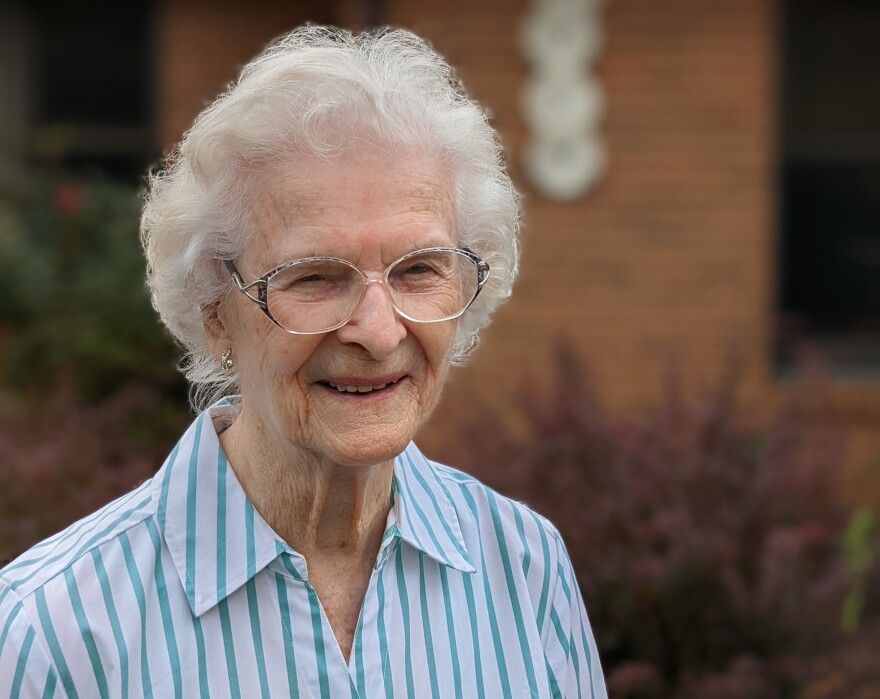The National Weather Service has a network of more than 8,000 volunteer weather observers across the country, and 96-year-old Dorothy Stebbins is one of the most experienced.
She’s been measuring rainfall in Ohio’s Miami Valley for more than 50 years. Now, Stebbins is retiring. But before she does, she’s teaching us how it's done.
“Come out here and I’ll show you the tank,” Stebbins said. She leans over the white tube-shaped tank and reaches a thin hand down inside.
“We go from 8 o’clock to 8 o’clock, in a 24 hour span,” she said. “Then, you have a measuring stick, and at 8 o’clock each morning, you take that reading. If it's over half an inch, you call it in to Mr. Ekberg, and he takes care of it from then on.”
Mr. Ekberg is Mike Ekberg at the Miami Conservancy District. They work to make sure the Great Miami River doesn’t flood and harm communities in the Dayton area. They have dams and levees all along the river.
“So, basically, I'm kind of the water data guy,” Ekberg says. “We measure everything from stream flows to the amount of precipitation that comes into the Miami Valley to levels of groundwater in the aquifer. And we do a little bit of water quality work on top of that as well.”
The conservancy district has a team of 42 people who measure precipitation. But Ekberg says none of those observers has done it as long and reliably as Stebbins. He calls her a “rock star.”
“It’s that consistent, methodical collection of the data, doing it the proper way, that observers like Dorothy do that yields really important results in terms of being able to make conclusions about how climate is changing here in the Miami Valley over the long term.”

Now that Dorothy is retiring, her son, Dan Stebbins, is taking over. And he's not just following in his mother’s footsteps. His father actually took the job first, after a man driving by the family farm saw his dad sitting on a tractor and hit the brakes. The man walked up to his father and asked if he wanted to measure rainfall.
Dan Stebbins said his father “thought the guy was crazy. He thought it was a joke.”
But it wasn’t a joke. His father took the volunteer position, though he got sick soon thereafter.
That’s when Dorothy Stebbins took over.
“He had cancer, but he didn't know it back then, and it took him in a hurry,” she said. “In fact, the first time he went to the doctor, they scheduled surgery a day or two later, and from then on, he was pretty much not able to do anything. So, when he passed, then I called in.”
Dorothy Stebbins said measuring the rain gave her some peace during that time.
“I looked forward to it,” she said. “I really did. It was just something to do every morning, and I enjoyed it. It seems like a little thing, really. You think about a river, but you don’t think of all that goes behind it.”
Even so, Dorothy Stebbins has been doing this job for a half century. And for anyone thinking about becoming a weather observer, she has some sage advice.
“The secret to a lot of this — this getting up at 8 — is you can go back to bed when you're tired,” she said.
And while her son is measuring rainfall now, Dorothy Stebbins said she’s willing to fill in for him from time to time.


